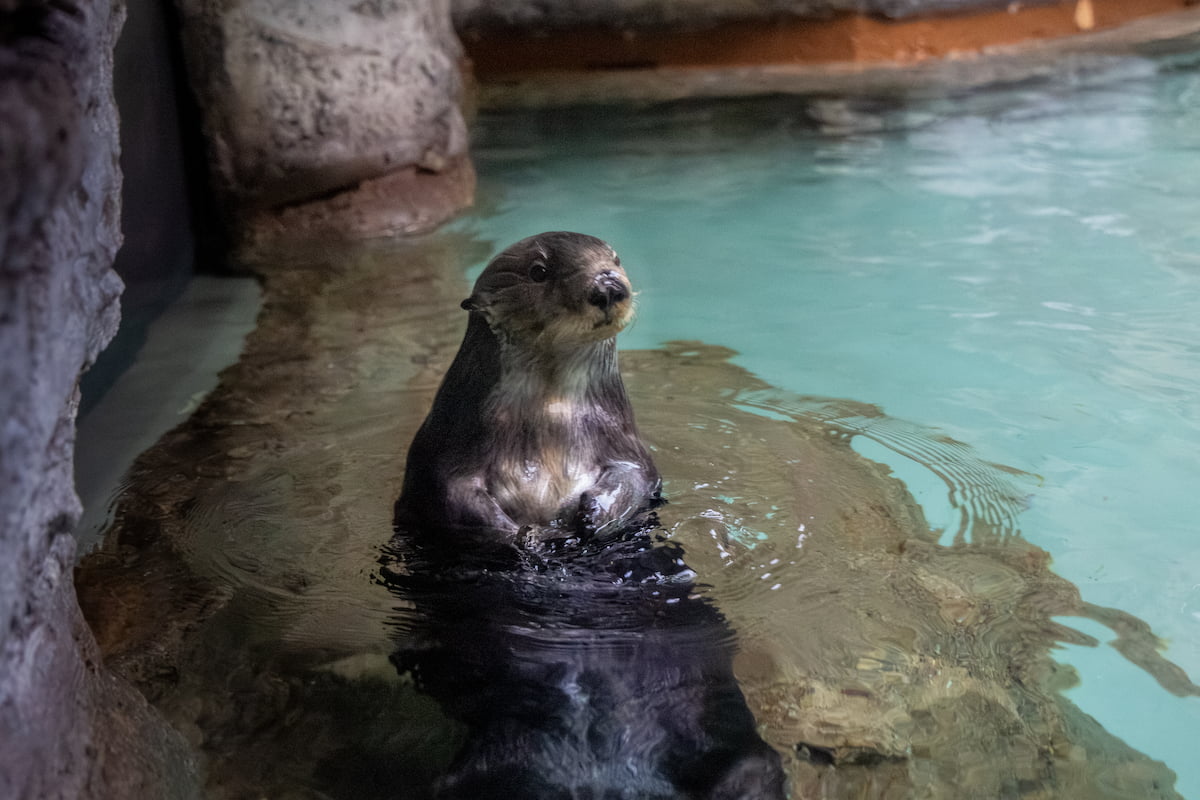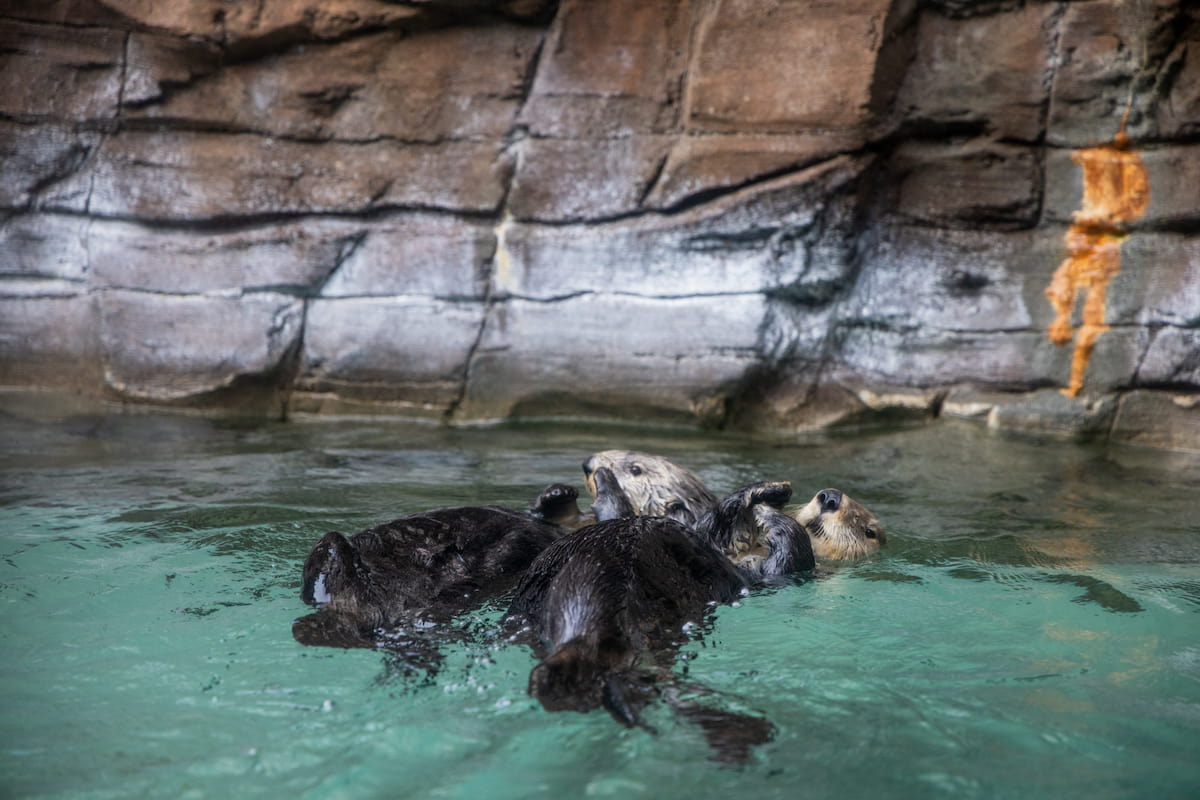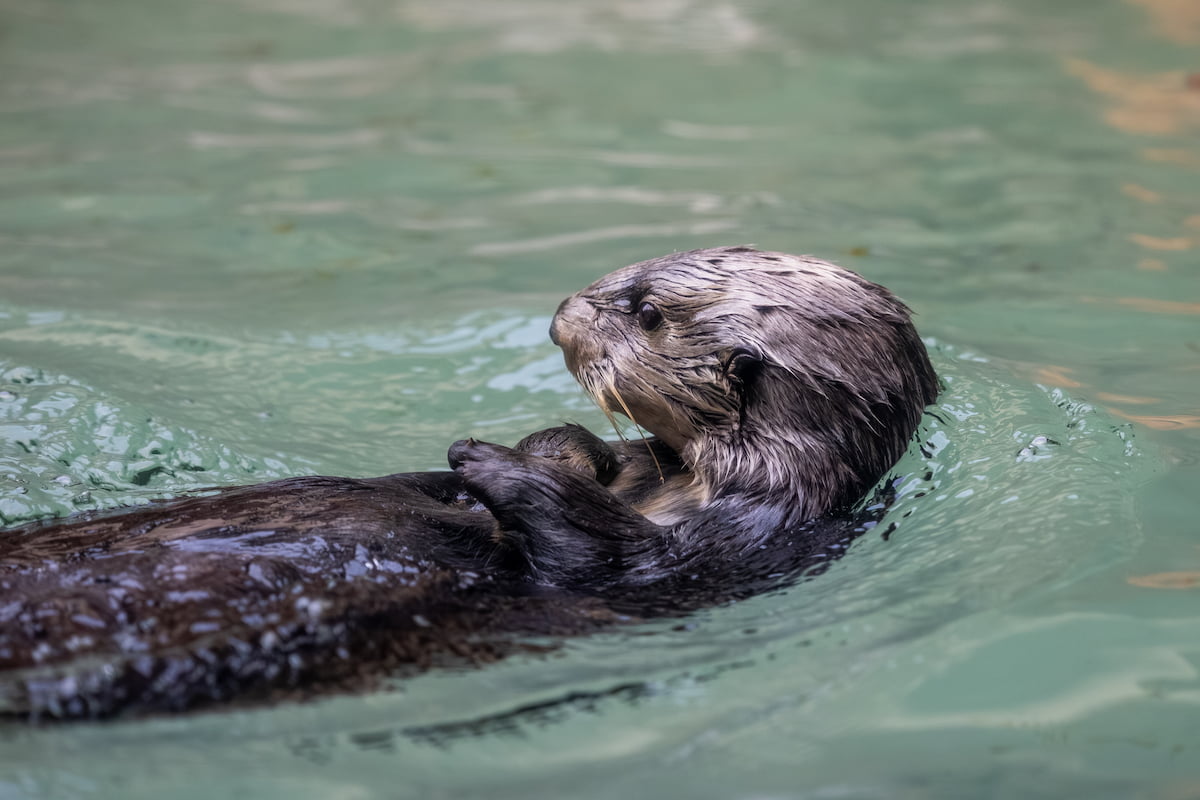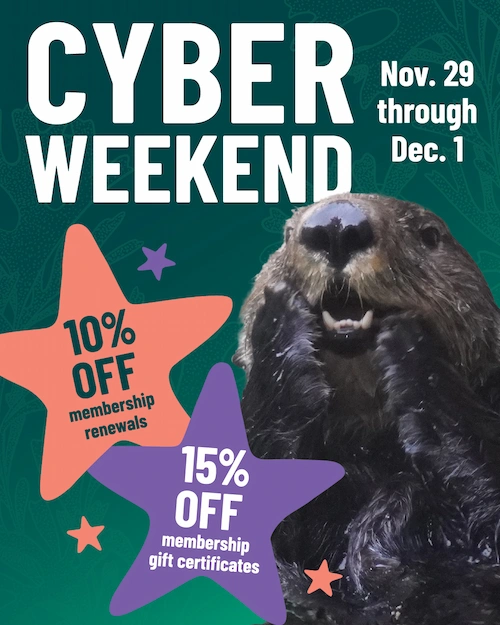Have you heard the news? The northern sea otters in our care, Mishka and Sekiu, have a new habitat-mate! Ten-year-old southern sea otter Ruby joined us on November 19, moving from her former home at the Monterey Bay Aquarium (MBA).

Welcome, Ruby!
Starting (very) small
Ruby was found, stranded, as a newborn pup in September of 2015. Weighing just 1.9 pounds, she was one of the smallest pups her rescuers had ever seen.
She was raised behind the scenes at MBA in their sea otter surrogacy program. After several attempts at having her live on her own in the wild, the team at MBA found that she had become dependent on humans for food. She was ultimately deemed non-releasable by the U.S. Fish and Wildlife Service and went on to join MBA’s sea otter habitat in 2022—where she charmed guests and became a beloved ambassador for her species.

Ruby getting to know her new habitat at the Seattle Aquarium.
From Monterey to Seattle: A true west coaster
For months, our care team worked closely with MBA’s, shadowing their care of Ruby, learning about her history, likes and dislikes, social needs and more. Collaboratively, the teams decided that our otter population would be a great fit for her.
As we mentioned above, Ruby is the first southern sea otter in our care. Southern sea otters are considered a distinct population. And, while southern and northern otters don’t share wild habitats, they do happily cohabitate in zoos and aquariums—their care needs are identical.
(What’s the difference between northern and southern sea otters? It basically comes down to two things: their range and their size. Northern sea otters have a range from Washington state to British Columbia and Alaska. Southern sea otters are found in California. And northern sea otters are larger, with males weighing up to 100 pounds and females up to 70—while southern males top out at about 65 pounds with females around 45 pounds. For context, Ruby’s current weight is 44 pounds; with Mishka at 50 and Sekiu at 54.)

Ruby relaxing with Sekiu.
Settling in
After making the journey to the Seattle Aquarium on November 19, Ruby was quickly introduced to her new habitat—and then to Mishka and Sekiu. In short, things have been going swimmingly!
Comments Senior Animal Care Specialist Kelli Lee, “When introducing an animal into a new habitat, we expect them to be active and explore every inch. After they’ve had a chance to check out their space, we look for behaviors that show they’re comfortable, such as resting and eating. For sea otters specifically, we also look to see that they’re grooming, since that’s essential for staying warm.” (Learn more about how amazing sea otter fur is on our sea otter webpage!)
Kelli continues, “When introducing sea otters, we expect them to interact with each other by sniffing each other’s faces and heads. Then, after this typically brief interlude, we continue to make sure they’re all grooming, eating and resting.”
“They’ve been cohabitating well,” says Animal Care Specialist Michelle Munoz. “Ruby tends to follow Sekiu the most. You can see her resting with Sekiu in the main habitat, and at night, Mishka and Sekiu will haul out on deck by their mats, so Ruby will join them.”

Ruby, we’re so glad you’re here!
Welcome to the Emerald City, Ruby!
Ruby’s preferences quickly became clear to her caregivers. Notes Kelli, “Ruby enjoys interacting with enrichment, such as puzzle feeders, a lot. Her favorite food is shrimp and her least favorites are surf clam siphons and stomachs.” (Can you blame her?)
She adds, “When spending time outside of feeding sessions, she likes to rest in areas of the water that are shallow, such as the arch between the two habitats.” Want to see what she’s up to? Check out our live webcam!
In the weeks and months to come, we’ll continue working with MBA as we learn more about Ruby. “Getting her comfortable in the space is our priority so she can do all the things a sea otter does—like grooming and eating,” comments Michelle. “Building a relationship with Ruby will help us work with her in the long run and also allows us to start training new behaviors with her!”
A decades-long commitment to sea otter conservation
For 30+ years, the Seattle Aquarium has led in the research of sea otters in Washington and contributed to recovery efforts with partners and collaborators around the world. We also have a long history of caring for individual northern sea otters who are unable to live in the wild.
Ruby’s arrival represents our continued commitment to sustaining and recovering sea otters, from California to Alaska and beyond. As a nonprofit, this work—both in the field and right here at the Aquarium—is only possible thanks to the support of our community. Every visit to the Aquarium supports this work and our conservation mission overall. We thank you!
We can’t wait for you to meet Ruby. Plan your visit today!


